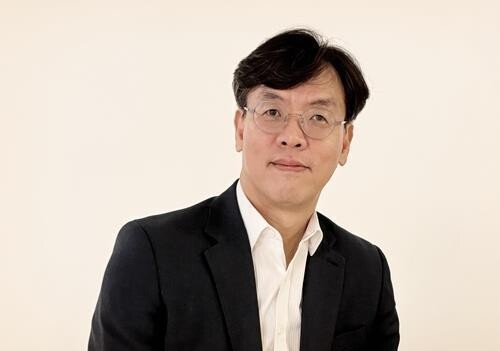*Editor’s note: K-VIBE invites experts from various K-culture sectors to share their extraordinary discovery about the Korean culture.
Matthew Lim's AI Innovation Story: What's Behind OpenAI’s US$40 Billion Funding
By Matthew Lim, AI expert and director of the Korean Association of AI Management (Former Head of Digital Strategy Research at Shinhan DS)

◇ OpenAI’s US$40 Billion Funding: Acceleration of Innovation or Rising User Costs?
A recent report that OpenAI has secured a staggering US$40 billion (approximately 58.5 trillion won) in investment, led by SoftBank and other global investors, has sparked renewed debate over the direction of artificial intelligence development and its broader implications.
While the funding signals a new era of technological abundance, it has also raised concerns about what values may be sacrificed in pursuit of innovation. As OpenAI, the most closely watched player in the AI industry, gains formidable financial backing, some observers are questioning whether this prosperity comes at a cost to the public.
The investment, officially announced on March 31, goes far beyond a simple capital infusion. According to a report by the Wall Street Journal, the funding is contingent upon OpenAI transitioning into a for-profit company by the end of this year. Failure to meet this condition could result in a partial or significantly devalued disbursement of funds.
This development appears to mark a departure from OpenAI’s original mission: to ensure that artificial general intelligence benefits all of humanity. Founded in 2015 as a nonprofit organization, OpenAI sought to prevent the monopolization of AI technology. But the 2019 creation of its capped-profit subsidiary, OpenAI LP, marked a shift toward a more commercial structure. That model limited investor returns to 100 times their investment—an ideal that now appears to be unraveling.
This trajectory is reminiscent of a once-idealistic college club evolving into a large corporate entity. As the organization scales up, critics wonder: Where did the initial spirit of altruism go?
◇ Cost Burden Shifting to Users
Many users may have already noticed subtle shifts in OpenAI’s service model. What began as a freely accessible tool has since introduced paid tiers, with some subscriptions now costing up to US$200 per month. API usage fees have also increased—particularly for non-English languages like Korean, where token consumption is higher, often doubling or even quintupling the cost compared to English.
This may only be the tip of the iceberg. With US$40 billion on the line, investors are unlikely to be satisfied with capped returns. As a result, the burden of cost recovery may inevitably fall on end users.
This raises significant concerns about the accessibility of AI technology. Startups, educational institutions, and independent developers may find it increasingly difficult to experiment with cutting-edge tools due to rising costs. What was once an open playground for all could slowly become an exclusive domain accessible only to a select few.
SoftBank's role in leading the investment also warrants attention. Chairman Masayoshi Son has consistently championed the “AI revolution” and has sought to integrate AI technologies across sectors such as telecommunications, finance, logistics, robotics, and digital content.
Given SoftBank’s vast investment portfolio, the partnership with OpenAI carries strategic implications that extend far beyond financial returns. However, the influx of large-scale capital inevitably raises questions about the future direction of AI development. The focus may shift from “What technology is best for humanity?” to “What technology yields the highest returns?”
As OpenAI moves forward, it will need to navigate the delicate balance between commercial interests and public good—a challenge that could define the next chapter of the AI era.
◇ Between Technology and Ethics: Finding the Balance
As AI development increasingly aligns with profit-driven motives, concerns are rising over the potential neglect of ethical considerations.
Artificial intelligence, by its nature, demands careful ethical and philosophical scrutiny. However, as the pressure for higher returns on investment mounts, such deliberations may be pushed to the margins.
There is a growing risk, for instance, that data collection practices could shift from a “necessity-based” approach to one grounded in “profitability.” Similarly, metrics like transparency and fairness could become secondary to market share and revenue growth.
Currently, OpenAI offers an “opt-out” policy, allowing users to prevent their data from being used to train its models. But history has shown that user-friendly policies can be abruptly reversed. If, at some point in the future, OpenAI were to abandon its opt-out option and begin mandating the collection of all user interactions, how many people would actually stop using ChatGPT as a result?
Chances are, most users would prioritize convenience over data privacy, giving up their personal information without much resistance.
The company’s massive fundraising is also likely to affect the global AI power balance. Microsoft, for example, invested US$10 billion (about 12 trillion won) in OpenAI in 2023, forming a close partnership. However, the relationship between the two companies has since grown more complex, and this new round of funding—led by SoftBank—could signal a shift in that alliance.
Meanwhile, China and the EU are also developing their own AI strategies. As AI becomes a strategic national asset rather than just a technological advancement, the competitive landscape is intensifying. But this arms race risks undermining the principles of openness and public interest that initially underpinned the field.
◇ The Need for Smarter Users
OpenAI’s successful capital raise clearly positions it as a dominant force in the global AI ecosystem. Still, the influence that ordinary users can exert on such corporate moves is limited. That’s why the most practical and meaningful response is for users to become smarter and more strategic in how they consume and apply AI.
First, users should evaluate AI services through a lens of cost-efficiency. Instead of being swayed by the latest technologies or premium offerings, they should choose services that align with their actual needs and goals. Free services and open-source models, for instance, can often serve as effective alternatives for individuals or businesses that don’t require advanced, high-cost solutions.
Second, users must actively manage their reliance on technology. Heavy dependence on a single provider leaves one vulnerable to abrupt policy shifts or price hikes. A better approach is to diversify usage across various platforms—including open-source technologies—thereby reducing risk and maintaining technological autonomy.
Third, AI literacy must be strengthened. The moment people begin to see AI as all-powerful, they risk becoming dependent on it. AI is a tool—not a replacement for human thinking. Users should critically assess and verify AI-generated content rather than accepting it at face value. Education, both in schools and workplaces, must emphasize not only how to use AI effectively and responsibly, but also how to coexist with it wisely.
This is especially important for the next generation, who must learn not just how to operate AI, but how to live with it ethically and intelligently.
Lastly, individuals must invest in developing their own core skills. Overreliance on AI could weaken essential human capabilities. Just as widespread use of calculators has diminished mental arithmetic, excessive dependence on AI risks eroding creative thinking and problem-solving abilities. A balance must be struck between using AI as a support tool and actively nurturing one’s own competencies.
AI should serve as an assistant, but the user must always remain in control. It is individuals—not machines—who will ultimately shape the future.
◇ The Power of Informed Choices
OpenAI’s shift toward commercialization and its massive capital raise are, at this point, irreversible. These changes lie beyond the control of the average user. However, users can respond with thoughtful, strategic choices.
Technology is a means, not an end. Rather than becoming beholden to any one tool or company, users should seek a balanced approach that makes the best of diverse AI offerings.
By enhancing AI literacy, managing dependence, and exercising rational judgment, individuals can play a meaningful role in shaping how AI is integrated into daily life.
Ultimately, coexistence with AI will not be determined solely by corporate strategies—it will hinge on the wisdom of each user. That, in essence, is the path to achieving genuine technological democracy.
(C) Yonhap News Agency. All Rights Reserved


















![[풀영상] 2025 MBC 방송연예대상 레드카펫|유재석·전현무·기안84·김연경·세븐틴 부승관·박지현·제베원(ZB1) 규빈·투어스(TWS) 도훈·주우재·하하 외](/news/data/20251229/p179586605817354_616_h.jpg)




![[가요소식] 제니 사진전](/news/data/20251230/yna1065624915968575_386_h2.jpg)










